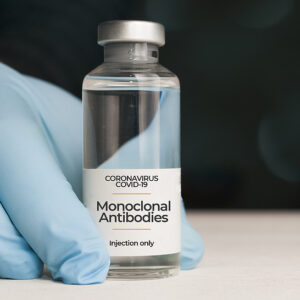As most Americans have returned to living as normally as possible, COVID is joining the ranks with other infectious diseases — like the flu, chickenpox and the common cold — as an ever-present threat. And like with other common viruses, Americans are learning to live with COVID.
However, for the millions of immunocompromised and elderly Americans at risk from COVID, the fatal danger of contracting the virus remains a stark reality.
A recent Centers for Disease Control and Prevention report shares good news regarding COVID in America, including declining cases and hospitalizations. But unfortunately, deaths attributed to COVID remain stubborn at “above 400 per day.” In that same report, the CDC recommends Americans address that risk by getting the available booster shot, which raises the question: Is the status quo good enough?
As we’ve learned from other experiences, the best defense against a continuing threat is an all-of-the-above approach that builds and improves on what’s worked in the past based on research, testing and innovation. The automotive industry didn’t stop investing in passenger safety with the invention of the seatbelt. Industry implemented airbags, crash-resistant designs and more rigorous testing. Now, cars are safer than ever because they use all the safety measures available.
Along with vaccines and oral antivirals, a key breakthrough in the COVID pandemic was the development and production of monoclonal antibodies — treatments that are man-made molecules used to mimic the body’s natural immune response against a virus or infection. Monoclonal antibodies have been used to treat cancer and auto-immune diseases and recently have been used to treat COVID.
While monoclonal antibodies are a potential solution for all Americans, this option is especially critical, and sometimes essential, for patients at risk of severe illness from COVID, including those who are immunocompromised and can’t take advantage of a vaccine or other existing treatments. For some Americans, monoclonal antibodies may be the only line of defense against a disease that could be devastating for them. Beyond treating COVID, monoclonal antibodies also can act as a preventive option.
Unfortunately, much of the public rhetoric around treating or preventing COVID suggests getting a vaccine and taking an oral antiviral are the only solutions, even if those are not options for the 7 million immunocompromised patients in the United States. For these patients, our nation’s COVID strategy has a glaring gap.
Research indicates that COVID could become endemic as soon as 2024, and it is clear many Americans are continuing to adjust to living with COVID, as we do with other infectious viruses. Like the flu, our response to COVID will shift while treatments must constantly change to outpace mutating strains. For perspective, during the 2021-2022 influenza season, approximately 49.4 percent of adults received the flu vaccine. Fortunately, for those who did get the flu (with or without the vaccine), other options for treatment exist.
Even with high vaccination rates against COVID, Americans are still susceptible to infection due to viral evolution, vaccine fatigue, and a lack of availability and access to critical treatments like monoclonal antibodies. The FDA recently announced that the agency revoked emergency use authorization for the monoclonal antibody Evusheld, which had previously been available to patients to prevent COVID. Now there is no monoclonal antibody treatment available. As we’ve seen with vaccine effectiveness versus omicron and now monoclonal antibodies, the virus mutation is outpacing our treatments. Patients, especially immunocompromised, may have to rely on staying home and masking when in public.
The importance of using and prioritizing the approval of every preventive option and treatment available, including monoclonal antibodies, cannot be understated. Even for those who don’t get severely ill from COVID, the infection continues making people sick, keeping adults out of work and children out of school, while costing taxpayers, employers, patients and our economy trillions of dollars.
Those suffering with “long COVID” could spend $9,000 a year in healthcare expenses, not to mention the cost of being out of work. And on a much larger scale, long COVID represents a $3.7 trillion economic effect in the United States. For Americans, lost earnings and reduced quality of life cost them $997 billion and $2.2 trillion, respectively. And these numbers are likely conservative as more cases of long COVID continue to arise.
Other reports note that 2 million to 4 million Americans could be out of work due to long COVID, and these numbers don’t account for the larger burden of long COVID since they don’t calculate productivity losses.
Simply put, this “new normal” is not sustainable, certainly not with our current COVID strategy. To be able to live with COVID, a reality we must accept, we need to prioritize availability and access to preventive and treatment options for all Americans, and these must include monoclonal antibodies.
Failing to embrace the incredible promise of these innovative treatments is a disservice to patients and the economy. It’s incumbent on our government leaders to advance increasingly nimble policies and processes and prioritize approving treatments that can protect all patients — especially those with no other options — promptly.
If our brief history with COVID has shown us anything, it is that the virus will not slow down and wait for our government to catch up.

